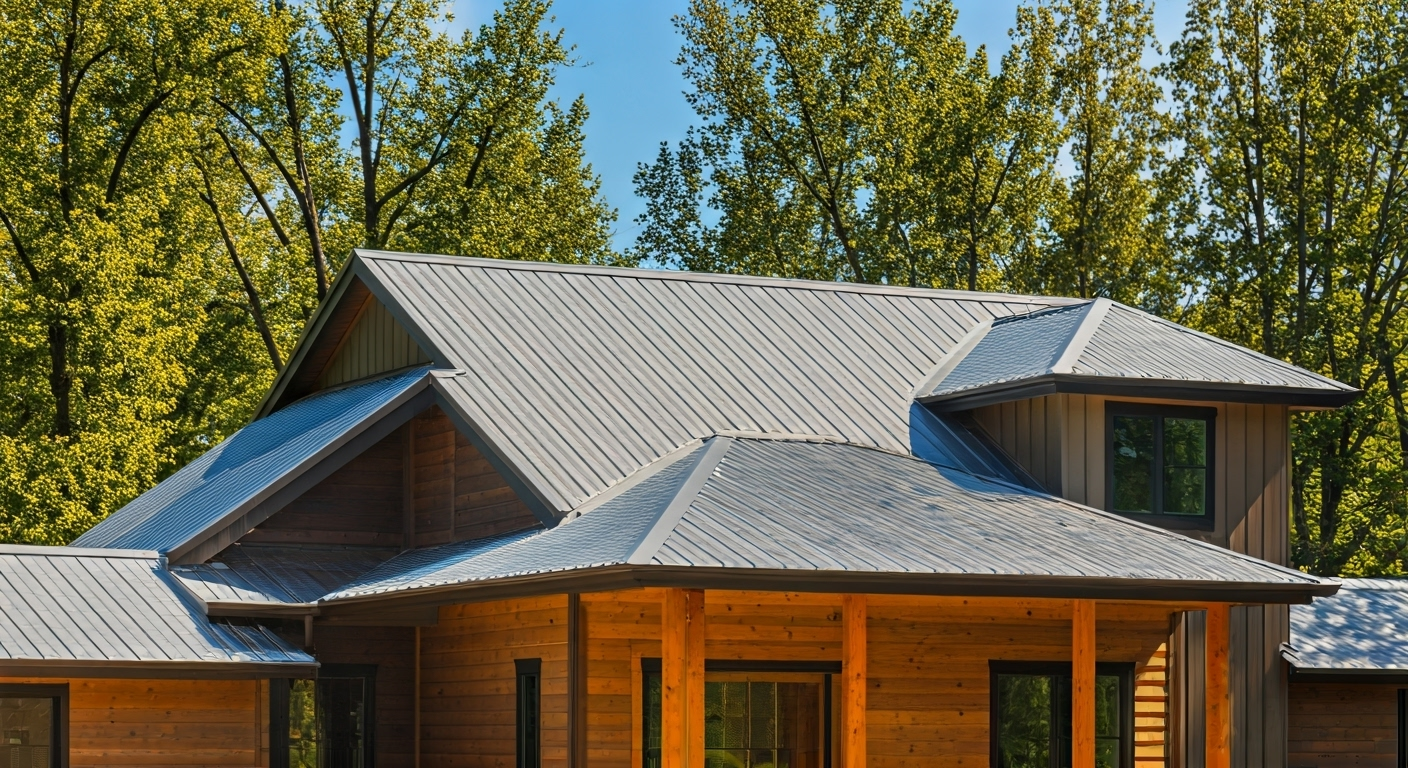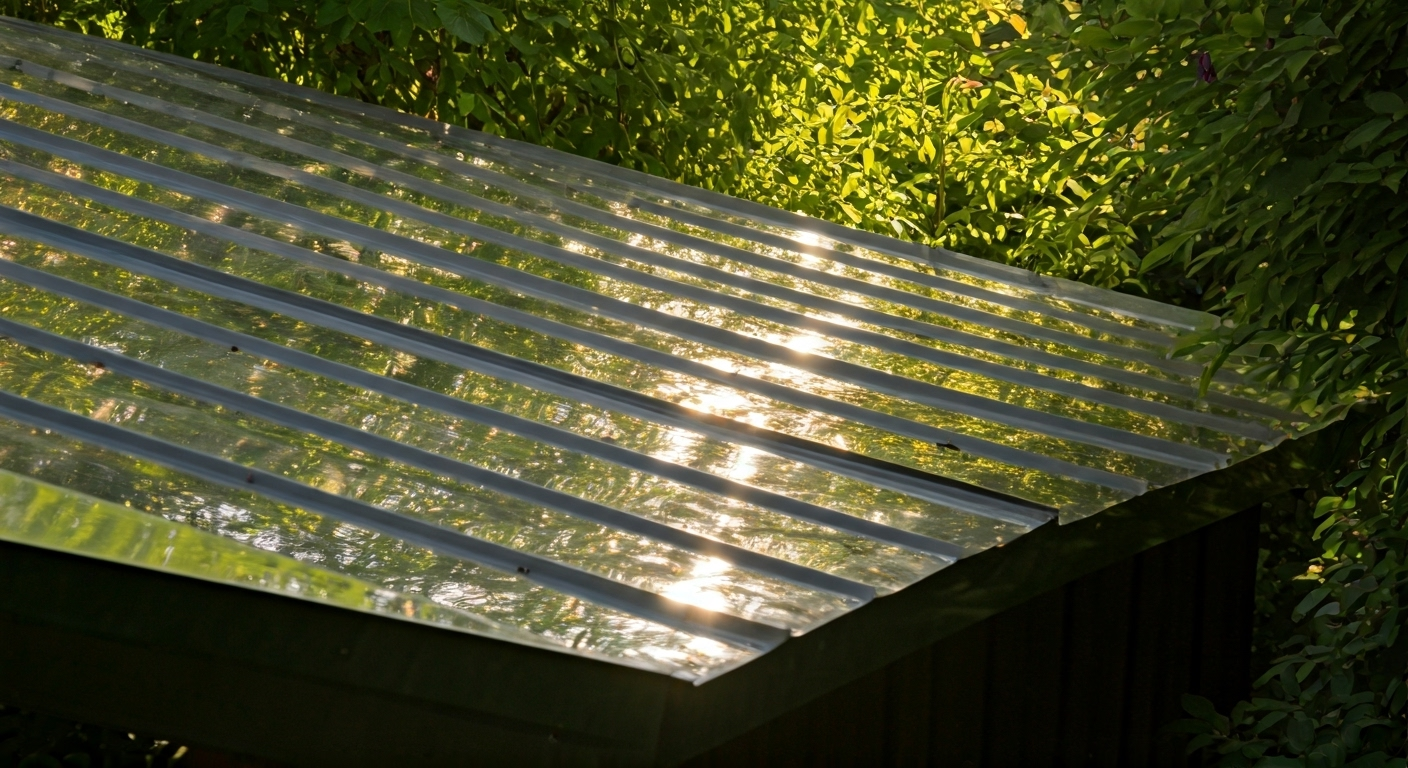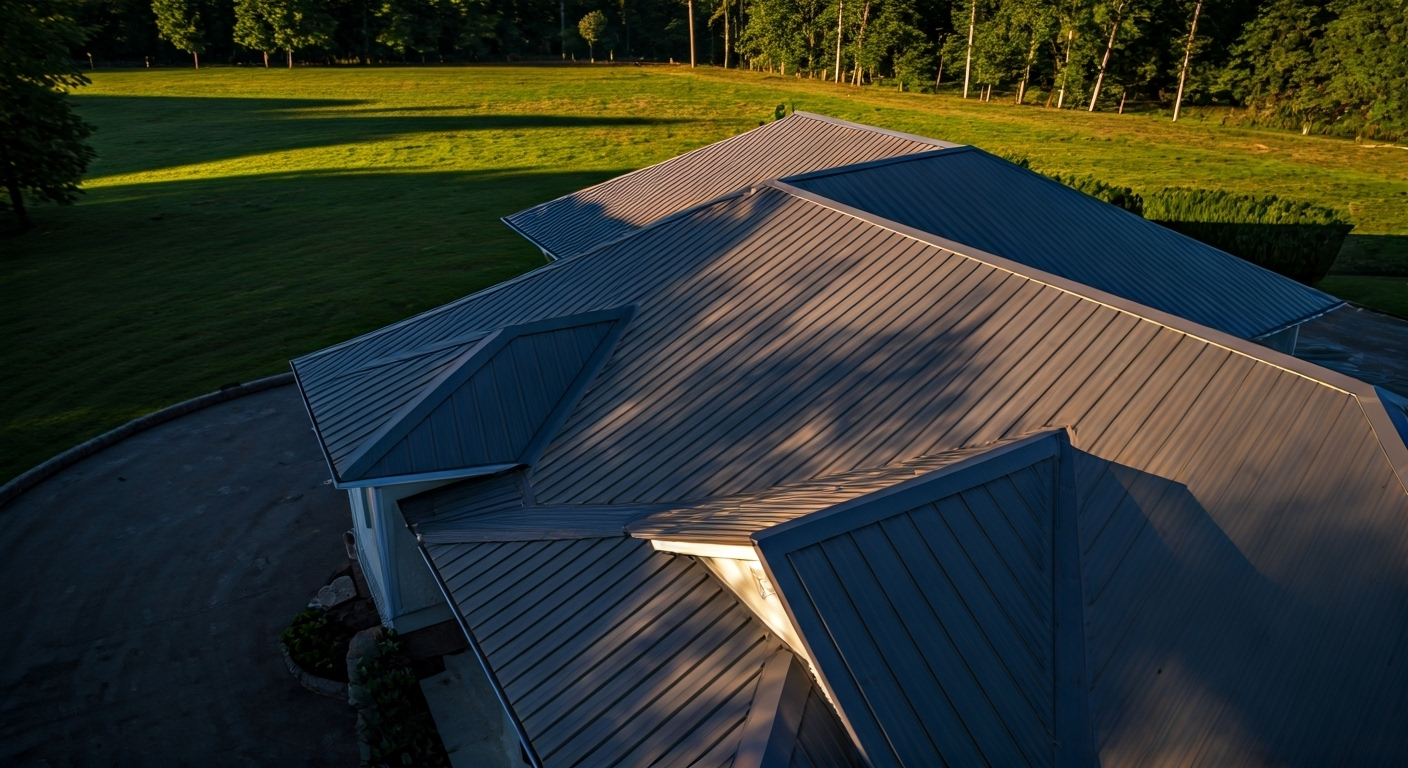
Key Highlights
- Metal roofs boast reflective properties that efficiently bounce back solar energy, reducing heat absorption in comparison to traditional roofing materials like asphalt shingles.
- Energy efficiency is a core advantage of metal roofing, often leading to lower cooling costs during hotter months.
- Contrary to common myths, metal roofs don’t necessarily retain excess heat but release it faster due to low thermal mass.
- The construction and coatings used on metal roofs significantly influence their interaction with heat.
- Light-colored metal panels contribute to cooler homes, while dark colors absorb a bit more heat but remain superior to asphalt.
- Ventilation and insulation systems further optimize the cooling effect, ensuring comfort indoors even in warm climates.
Introduction
When discussing metal roofing, one common question arises: Does a metal roof attract excessive heat? There’s a widespread misconception that metal roofs make homes hotter during summer, spurred by assumptions about heat absorption and conductivity. However, metal roofs are designed with energy-conscious materials and reflective properties that perform better than many traditional roofing options.
At Metal Roof Mobile AL, we pride ourselves on providing quality roofing solutions that debunk myths and elevate comfort. Let’s unravel the truth about how metal roofs interact with heat.
Understanding How Metal Roofs Interact with Heat

A deep understanding of the relationship between metal roofs and heat absorption is crucial for making informed decisions. Unlike heavier materials such as asphalt, metal roofs have a low thermal mass, meaning they neither retain nor radiate heat for long periods.
This unique property is complemented by advanced coatings and finishes that reflect sunlight effectively, ensuring lower indoor temperatures. If energy efficiency is your priority, metal roofs outperform traditional roofing materials while keeping your home cool in scorching summer months.
The Science Behind Heat Absorption and Reflection
Heat absorption is determined by the amount of solar energy a material can retain. Metal roofs, equipped with reflective coatings, excel in managing heat energy by bouncing sunlight away. Asphalt shingles, for instance, absorb much more heat due to their dense construction and darker colors, leading to increased indoor temperatures.
Reflective properties set metal roofs apart. These coatings minimise the amount of heat absorbed, creating what many call the “cool roof effect.” Even under direct sunlight, homes with metal roofing maintain more comfortable indoor temperatures.
The low thermal mass of metal panels adds another dimension to their efficiency. While asphalt roofs store heat and gradually release it overnight, metal roofing dissipates heat rapidly, preventing excess warmth from lingering in your home. This combination makes metal roofs the ideal choice for homeowners in hot climates.
Metal vs. Traditional Roofing Materials in Heat Performance
Metal roofs outperform traditional options like asphalt shingles in heat handling. Here’s a detailed comparison:
| Roofing Material | Heat Absorption | Heat Reflection | Longevity |
|---|---|---|---|
| Metal Roofing | Absorbs minimal heat due to reflective coatings | Excellent at reflecting solar energy | 50-70+ years |
| Asphalt Shingles | Absorbs significant heat from dark colors | Poor reflection, contributes to heat buildup | 20-30 years |
| Slate or Concrete Roofing | High heat absorption due to thermal mass | Minimal reflective properties | 60+ years |
Metal roofing excels in durability and energy efficiency, making it an ideal solution for reducing indoor heat and lowering energy costs. Transitioning to metal roofs ensures long-term savings and enhanced comfort.
Common Myths About Metal Roofs and Heat
Misconceptions regarding metal roofing often overshadow its benefits. One persistent myth suggests that metal roofs trap excess heat, making homes unbearably warm. However, the truth is they release heat more effectively than asphalt shingles, thanks to rapid dissipation properties.
Another myth revolves around high heat conductivity being harmful. Surprisingly, this aspect can actually benefit homeowners by ensuring heat escapes quickly. Opting for reflective coatings and light-colored finishes maximises cooling benefits—debunking myths while highlighting the efficiency of metal roofing systems.
Does Metal Really Make Your Home Hotter?
Many homeowners worry that metal roofs might increase indoor temperatures. The reality is quite the opposite. Metal roofs are specifically designed to manage heat absorption and maintain cooler environments inside. Their reflective coatings ensure less solar energy reaches your home, reducing overall heat levels.
Moreover, the low thermal mass of metal prevents prolonged heat retention. Unlike dark asphalt shingles that trap and slowly release warmth, metal panels help keep temperature spikes at bay.
Proper insulation further amplifies these cooling effects. When combined with efficient ventilation and cooling systems, metal roofs contribute to lower energy costs and consistent indoor comfort. Rather than heating up your home, they work to maintain pleasant conditions year-round—even in steamy summer months.
Are All Metal Roofs Equally Affected by the Sun?
Not all metal roofs have the same interaction with sunlight. Factors like the type of metal, color choices, and surface coatings play pivotal roles in determining their heat absorption levels.
Lighter-colored metal roofs are highly effective at reflecting sunlight, keeping homes cooler in warmer climates. On the other hand, darker shades absorb slightly more solar energy but still outperform asphalt shingles in reflection and energy savings.
Additionally, high-quality coatings, like the industry-leading Kynar 500®, enhance reflective properties. These coatings ensure durability while improving performance against solar intensity, allowing both light and dark-colored roofs to keep energy costs manageable. Choosing the right combination of material, color, and finish results in a metal roof tailored for optimal cooling efficiency in your environment.
Factors That Influence the Temperature of Metal Roofs

Several variables impact how metal roofs manage heat. Firstly, the construction of the roof—including the type of metal panel and its thermal conductivity—determines heat retention and dissipation rates.
Secondly, elements like insulation and ventilation contribute significantly to controlling indoor temperatures. Roofs equipped with reflective coatings and lighter colors minimise heat absorption, creating an energy-efficient solution for households in warmer climates. Understanding these factors empowers homeowners to optimise their roofing system for ultimate performance.
The Role of Color, Coatings, and Finishes
Roof aesthetics aren’t just about visual appeal—they directly affect thermal performance. Here’s what to know:
- Roof Color: Light shades reflect more sunlight, reducing heat absorption while darker tones absorb slightly more energy.
- Advanced Coatings: High-performance coatings like Kynar 500® improve reflectivity and durability.
- Surface Finishes: Smooth finishes enhance reflective properties better than textured ones.
- Metal Panels: Selecting panels with superior reflective capabilities maximises cooling effects.
Choosing lighter-colored panels with the right coatings ensures your home stays cooler while retaining energy efficiency. At Metal Roof Mobile AL, we provide a wide range of options to meet both functional and aesthetic needs.
Importance of Ventilation and Insulation
Ventilation and insulation systems are critical in regulating the indoor temperature beneath a metal roof. Without them, excess heat can accumulate, reducing the effectiveness of reflective properties.
Key factors:
- Ventilation: Proper attic ventilation prevents heat buildup by allowing warm air to escape.
- Insulation: Fiberglass batts or spray foam insulation reduce heat transfer, keeping spaces cool.
- Energy Savings: A well-ventilated and insulated roof decreases reliance on air conditioning systems.
- Roof Integrity: Insulation helps curb moisture, mildew, and mold issues, prolonging durability.
Investing in effective insulation and ventilation ensures optimal energy savings and indoor comfort—key priorities for any homeowner.
Conclusion
In conclusion, metal roofs do not inherently attract more heat than other roofing materials. In fact, their ability to reflect sunlight can actually help keep your home cooler. Understanding the science behind heat absorption and the factors that influence temperature—such as color, coatings, and proper ventilation—is essential for making informed decisions about your roofing options. As myths surrounding metal roofs continue to circulate, it’s important to rely on facts and expert advice. If you’re considering a metal roof for your home, contact us at Metal Roof Mobile AL for a free consultation, and let us help you choose the best roofing solution for your needs.
Frequently Asked Questions
Can a metal roof help lower my energy bills?
Yes, metal roofs can significantly reduce energy bills. Their reflective coatings bounce sunlight away, cutting heat absorption and lowering the reliance on cooling systems. This energy-efficient feature leads to long-term savings, especially in hotter climates. At Metal Roof Mobile AL, we prioritise solutions that keep your home comfortable year-round.
